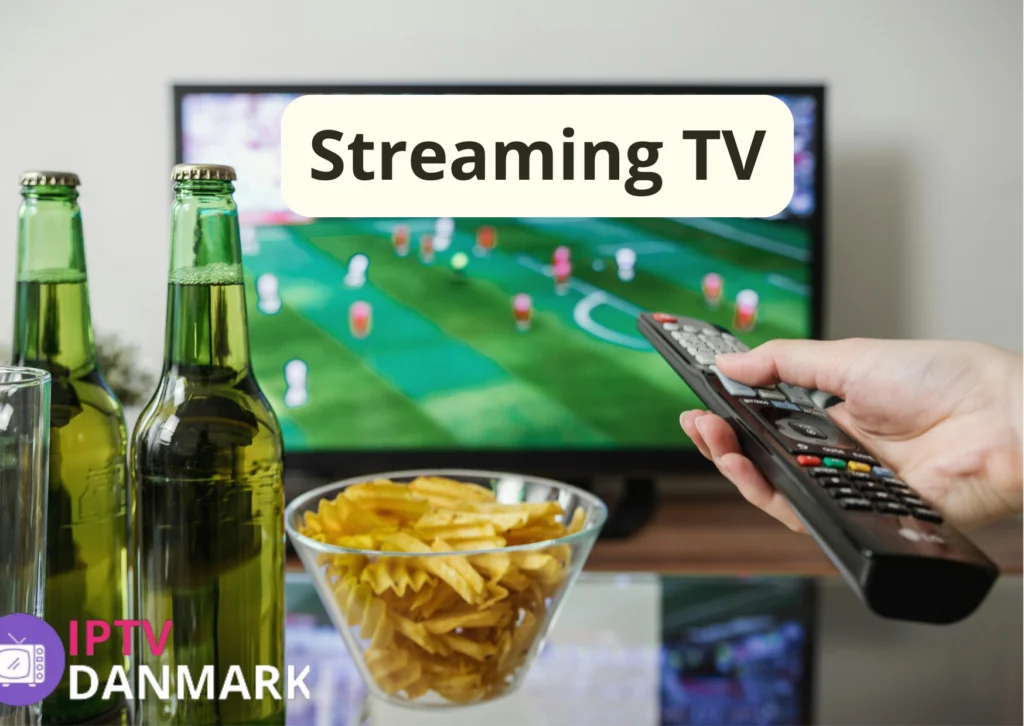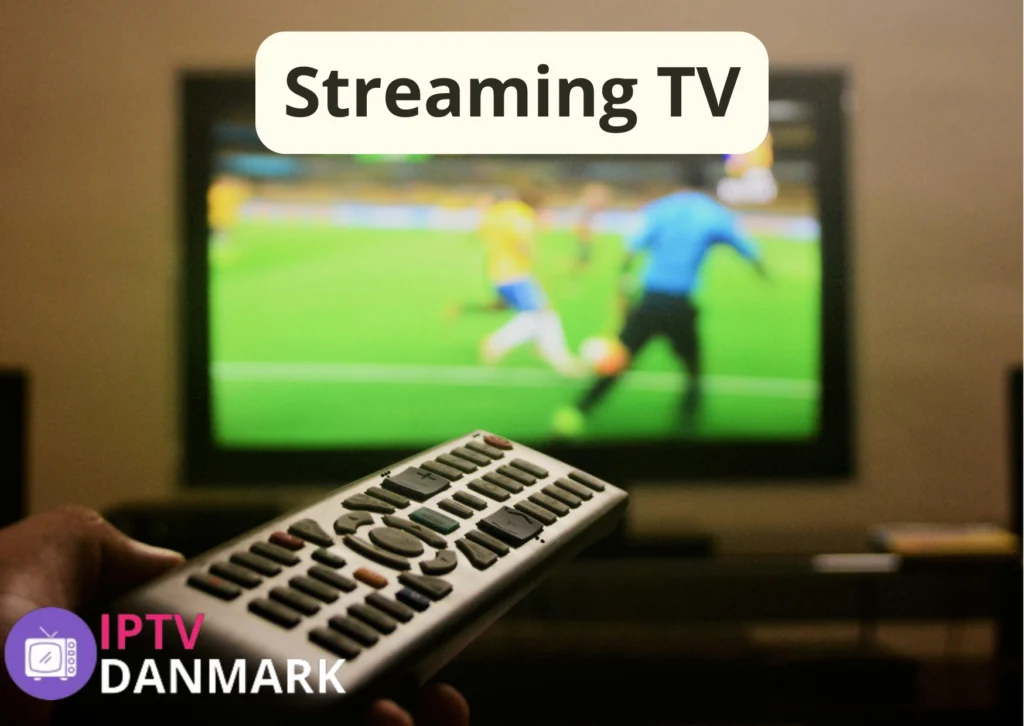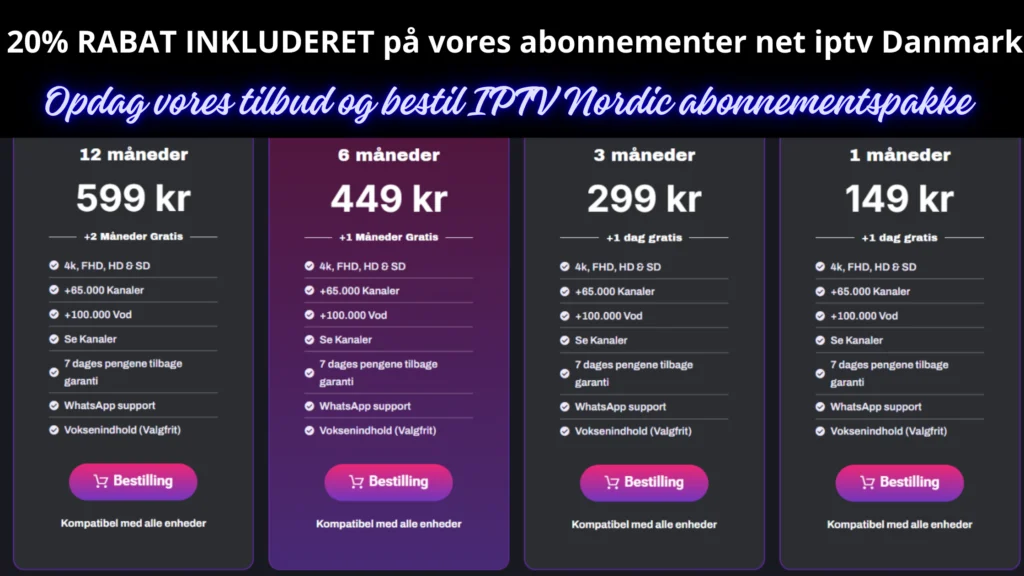Introduction to Streaming TV
Definition and Evolution of Streaming TV
Streaming TV refers to the method of delivering television content over the internet in real-time or on-demand, as opposed to traditional cable or satellite television, which broadcasts content over coaxial or satellite signals. This technology allows users to watch TV shows, movies, sports, and other content via the internet without the need for downloading files beforehand. Streaming TV works by transmitting data in a continuous stream, enabling instant playback while the remainder of the data is still being sent. This method ensures that users experience real-time content delivery and can enjoy content instantly without waiting for the entire file to download.
The evolution of streaming TV can be traced back to the development of faster internet speeds, improvements in video compression technologies, and the rise of cloud-based services. In the early 2000s, platforms like YouTube revolutionized how users consumed video content by making it easily accessible and viewable online. As technology advanced, companies like Netflix transitioned from DVD rental services to online streaming, setting the stage for a global shift in media consumption habits. Today, streaming TV is ubiquitous, with platforms offering everything from live TV broadcasts to an expansive library of on-demand content.

Differences Between Streaming TV and Traditional Cable
The key difference between streaming TV and traditional cable lies in the mode of content delivery. Traditional cable relies on physical infrastructures, such as coaxial cables or satellite dishes, to deliver channels and content to subscribers. It operates on a scheduled programming model, where viewers must tune in at specific times to catch their favorite shows. Cable packages are often bundled, meaning viewers must subscribe to large groups of channels, many of which they may not watch, in order to get access to the ones they want.
Streaming TV, on the other hand, delivers content via the internet. Users have the flexibility to choose what they want to watch and when, thanks to the on-demand nature of streaming services. Another significant difference is that streaming TV can be accessed on a wide variety of devices, including smart TVs, smartphones, tablets, laptops, and more. This multi-device accessibility gives viewers the freedom to watch content anywhere they have an internet connection. Streaming services also allow for more personalization, as users can create custom watchlists, receive tailored recommendations, and access niche content that may not be available on traditional TV.
Growth and Popularity of Streaming Services
Streaming services have experienced exponential growth in recent years, driven by changing consumer habits, technological advancements, and the demand for greater flexibility and personalization. The shift from traditional cable to streaming services has been accelerated by the “cord-cutting” trend, where viewers cancel their cable subscriptions in favor of more affordable, convenient streaming options. The COVID-19 pandemic further fueled the rise of streaming services, as lockdowns and social distancing measures increased the demand for in-home entertainment.
The popularity of streaming services can also be attributed to the vast variety of content available. Platforms like Netflix, Hulu, and Amazon Prime have invested heavily in original programming, producing exclusive series and films that draw in subscribers. These services offer extensive libraries of both licensed and original content, including movies, TV shows, documentaries, and live broadcasts, catering to a broad spectrum of tastes and preferences.
Streaming services also offer personalized experiences through advanced algorithms that recommend content based on user preferences, viewing history, and behavior. This creates a highly engaging and user-friendly environment that traditional TV cannot match.
Popular Streaming TV Platforms
Overview of Leading Platforms (e.g., Netflix, Hulu, Amazon Prime)
Several key players dominate the streaming TV industry, each offering unique content, features, and user experiences.
- Netflix: As the pioneer of the streaming revolution, Netflix is known for its extensive library of content, including award-winning original series like Stranger Things, The Crown, and The Witcher. With millions of subscribers worldwide, Netflix provides both licensed and original content across various genres, including drama, comedy, documentaries, and children’s programming.
- Hulu: Hulu offers a hybrid streaming model, combining on-demand content with live TV streaming options. While it primarily serves the U.S. market, Hulu’s on-demand library includes current TV episodes from major networks, as well as a selection of films and original series. Hulu’s live TV feature includes access to over 60 channels, allowing viewers to stream sports, news, and other live content alongside their favorite on-demand shows.
- Amazon Prime Video: Amazon Prime Video, included with an Amazon Prime membership, is another major player in the streaming industry. It offers a wide range of films, TV series, and exclusive content, such as The Marvelous Mrs. Maisel and The Boys. Prime Video also allows users to rent or purchase additional titles, giving them access to a broader array of content beyond the included Prime library.
Regional and Global Streaming Providers
In addition to global giants like Netflix and Amazon Prime, several regional streaming services cater to specific markets.
- Disney+: Disney+ has quickly risen in popularity due to its exclusive access to Disney, Pixar, Marvel, Star Wars, and National Geographic content. Available in multiple countries, it appeals to family audiences and fans of blockbuster franchises.
- BBC iPlayer: The BBC’s iPlayer is a UK-based service offering live and on-demand access to BBC programs. It provides access to a variety of genres, including drama, documentaries, news, and children’s programming.
- ZEE5: Targeting Indian and South Asian markets, ZEE5 offers a vast library of regional content in multiple languages. It also includes original series and films catering to the tastes of viewers in these regions.
Competitive Landscape and User Preferences
The competition among streaming platforms is fierce, with each service vying for subscribers by offering unique content, exclusive deals, and user-friendly features. User preferences are often shaped by several factors, including:
- Content library: Many users choose platforms based on the availability of exclusive or original content, such as Netflix’s original series or Disney+’s Marvel and Star Wars franchises.
- Price: Pricing plays a significant role in user decisions. Consumers often look for affordable subscription options or bundle deals that provide value for money.
- User interface: A seamless, intuitive user interface can greatly enhance the viewing experience. Services that offer easy navigation, personalized recommendations, and flexible playback options tend to attract and retain more users.
- Device compatibility: Platforms that offer multi-device access, allowing users to stream content on smartphones, tablets, gaming consoles, and smart TVs, have a competitive advantage.

Subscription Plans and Pricing Models
Free vs. Paid Streaming TV Options
Streaming TV services come in two main models: free and paid. Free services typically rely on advertisements to generate revenue and may limit the amount of content available or include frequent ad breaks. Examples of ad-supported streaming platforms include Pluto TV, Tubi, and Peacock’s free tier. These platforms are appealing to cost-conscious users who don’t mind ads or are looking for supplementary content alongside their primary streaming subscriptions.
Paid streaming services, such as Netflix, Hulu, and Disney+, operate on subscription models. Subscribers pay a monthly or yearly fee for ad-free content, access to premium features, and a more extensive content library. The lack of interruptions and access to exclusive programming are key factors driving users to opt for paid services.
Overview of Subscription Plans
Streaming platforms offer various subscription plans to cater to different needs and budgets. Typically, these plans differ in terms of:
- Number of simultaneous streams: Many services, like Netflix, offer tiered pricing based on the number of devices that can stream content simultaneously.
- Video quality: Subscription plans may vary based on the quality of streaming, ranging from standard definition (SD) to high definition (HD) and even ultra-high definition (4K).
- Content access: Some platforms, like Hulu, offer multiple tiers that unlock additional content, such as live TV or premium channel add-ons like HBO or Showtime.
Price Comparisons and Special Offers
Streaming service pricing can range from a few dollars to more premium plans costing upwards of $15 per month. Platforms frequently offer discounts, free trials, or bundle deals to attract new subscribers. For example, Disney+ offers bundles with Hulu and ESPN+, while Amazon Prime Video is included with an Amazon Prime membership, which also offers benefits like free shipping and music streaming.
Some services have introduced annual payment options, allowing subscribers to save money compared to monthly payments. These offers, along with seasonal discounts and promotional deals, are effective ways to entice potential subscribers.

Content Availability and Variety
Range of Genres and Programming Offered
Streaming services pride themselves on offering diverse content across a wide range of genres, including drama, comedy, horror, action, documentary, and reality TV. Many platforms curate their libraries to reflect audience preferences, ensuring they cater to fans of popular genres while also offering niche content.
Exclusive Content and Original Programming
One of the major competitive advantages for streaming platforms is the production of exclusive content and original programming. Services like Netflix, Hulu, and Amazon Prime Video have made significant investments in creating high-quality original series and films, setting them apart from traditional TV networks. Titles like Stranger Things, The Handmaid’s Tale, and The Marvelous Mrs. Maisel have drawn in millions of viewers and contributed to the overall success of these platforms.
Exclusive content serves as a key differentiator, with many users subscribing to multiple platforms to access their favorite series or films that aren’t available elsewhere.
Local vs. International Content Libraries
Many streaming platforms aim to appeal to global audiences by offering localized content alongside international hits. For example, Netflix invests in producing original content in different regions, including Korean dramas, Indian films, and European series. Similarly, Amazon Prime Video and Disney+ offer region-specific libraries, catering to the tastes of viewers in different parts of the world.
The availability of local content, such as regional shows, movies, and even sports, is essential for platforms trying to capture audiences in specific markets.
Technological Infrastructure Behind Streaming TV
Streaming Protocols and Internet Requirements
Streaming TV operates using various streaming protocols, including HTTP Live Streaming (HLS) and Dynamic Adaptive Streaming over HTTP (DASH), which allow content to be delivered efficiently over the internet. These protocols enable adaptive streaming, where the quality of the video adjusts automatically based on the user’s internet speed, ensuring a smooth viewing experience even on slower connections.
To stream content in HD or 4K, users generally require faster internet speeds. For example, streaming in HD typically requires speeds of at least 5 Mbps, while 4K content demands around 25 Mbps or higher for optimal quality.
Importance of Bandwidth and Streaming Quality
Bandwidth plays a crucial role in determining the quality of streaming. Streaming services compress video files to ensure efficient delivery, but insufficient bandwidth can lead to buffering issues, lower video quality, or playback interruptions. Many platforms offer options to adjust streaming quality based on bandwidth availability, allowing users to optimize their viewing experience regardless of their internet speed.
Device Compatibility and Multi-Platform Support
A significant advantage of streaming TV is its multi-platform support. Streaming services are designed to be compatible with a wide range of devices, including smart TVs, smartphones, tablets, gaming consoles, and streaming devices like Roku, Amazon Fire Stick, and Apple TV. This cross-device compatibility allows users to seamlessly switch between devices, enabling greater flexibility in when and where they consume content.
User Experience and Interface Design
Ease of Use and Navigation on Streaming Platforms
User experience is paramount in the design of streaming platforms, with ease of navigation being a top priority. Streaming services aim to create intuitive interfaces that allow users to browse and discover content with minimal effort. Features like search functions, categorized libraries, and personalized recommendations make it easy for viewers to find something to watch.
Customization Options (Profiles, Watchlists, Recommendations)
Streaming platforms offer various customization options to enhance the user experience. Many services allow users to create individual profiles, each with personalized watchlists and recommendations based on viewing history. These features provide a tailored experience for each user, ensuring that content suggestions are relevant and engaging.
Accessibility Features for Different Audiences
Accessibility is a key consideration for streaming services, with many platforms offering features to accommodate different audiences. For example, subtitles, closed captions, and audio descriptions are commonly available to assist viewers with hearing or visual impairments. Streaming platforms may also provide interface options like adjustable font sizes and voice commands to make the experience more inclusive.
Streaming TV vs. Traditional TV
Key Differences in Content Delivery and Viewing Experience
The most significant difference between streaming TV and traditional cable lies in content delivery. Traditional TV relies on scheduled broadcasts, meaning viewers must adhere to fixed programming times. In contrast, streaming TV provides on-demand access, allowing viewers to watch content whenever they choose. Streaming TV also offers greater flexibility, as users can access content on various devices and from any location with an internet connection.
Cost Comparison Between Streaming and Cable
Streaming services typically offer more affordable alternatives to traditional cable packages, which often include large bundles of channels, many of which may go unwatched. The customizable nature of streaming subscriptions allows users to select the specific services they want, resulting in lower monthly costs. However, with the growing number of streaming platforms, some consumers are experiencing “subscription fatigue” as they subscribe to multiple services to access different content, potentially driving up overall costs.
The Impact of Streaming TV on Cable Services
The rise of streaming TV has had a profound impact on traditional cable services, contributing to the “cord-cutting” trend, where viewers cancel their cable subscriptions in favor of streaming. As a result, cable companies have seen a decline in subscriber numbers, leading some to offer their own streaming options or partner with streaming platforms to remain competitive.
Impact of Streaming TV on Media Consumption
Changing Viewer Habits and Preferences
Streaming TV has fundamentally altered how audiences consume media. Viewers now have more control over what they watch and when, leading to a shift away from scheduled programming and towards on-demand viewing. This shift has given rise to new viewer habits, such as binge-watching, where viewers watch multiple episodes or entire seasons of a show in one sitting.
Binge-Watching Culture and On-Demand Viewing
The availability of entire seasons of shows on streaming platforms has popularized binge-watching, a practice that has become a defining characteristic of modern media consumption. On-demand viewing offers unparalleled flexibility, allowing users to watch content at their own pace, rather than waiting for weekly episodes to air.
Decline of Traditional TV Ratings and Advertising
The rise of streaming TV has contributed to a decline in traditional TV ratings, as more viewers opt for the convenience and flexibility of on-demand content. This shift has had significant implications for advertising, as streaming platforms typically offer ad-free experiences or limited commercials, making it harder for traditional advertisers to reach large audiences through linear TV.
Legal and Regulatory Issues in Streaming TV
Licensing and Distribution Rights for Content
One of the primary legal challenges facing streaming TV platforms is securing licensing and distribution rights for content. These rights vary by region, which is why content libraries differ between countries. Streaming services must navigate complex negotiations with content creators, studios, and networks to obtain the rights to stream movies and TV shows.
Copyright Concerns and Piracy Issues
Copyright infringement and piracy remain significant concerns for the streaming industry. Unauthorized streaming websites and services often provide illegal access to copyrighted content, posing a threat to legitimate platforms. Streaming services continuously work to combat piracy by improving security measures, enforcing copyrights, and working with regulators to shut down illegal operations.
Regulatory Policies Affecting Streaming Services
As streaming services have grown in popularity, regulatory policies have evolved to address issues related to content distribution, data privacy, and consumer protection. For example, the General Data Protection Regulation (GDPR) in the European Union has influenced how streaming platforms handle user data, ensuring greater transparency and control over personal information.
Future Trends in Streaming TV
Impact of Emerging Technologies (AI, VR, 5G) on Streaming TV
Emerging technologies are poised to shape the future of streaming TV. Artificial intelligence (AI) is already being used to enhance content recommendations, while virtual reality (VR) and augmented reality (AR) could revolutionize how viewers experience media. Additionally, the rollout of 5G networks will improve streaming speeds and quality, enabling smoother, higher-resolution content delivery even on mobile devices.
Predicted Growth of Streaming TV Market
The streaming TV market is expected to continue its rapid growth in the coming years. The global demand for digital content, coupled with advancements in technology, will likely drive further innovation in the industry. More streaming platforms are likely to emerge, while existing players will expand their content libraries and introduce new features to stay competitive.
Challenges and Opportunities for Future Platforms
As the streaming landscape becomes more crowded, platforms will face challenges related to subscriber retention, content differentiation, and pricing strategies. However, opportunities abound for services that can leverage technology, provide unique content, and cater to niche audiences. The integration of interactive elements, such as live streaming, real-time engagement, and personalized content, will likely play a significant role in shaping the future of streaming TV.
4o
ChatGPT can make mistake

